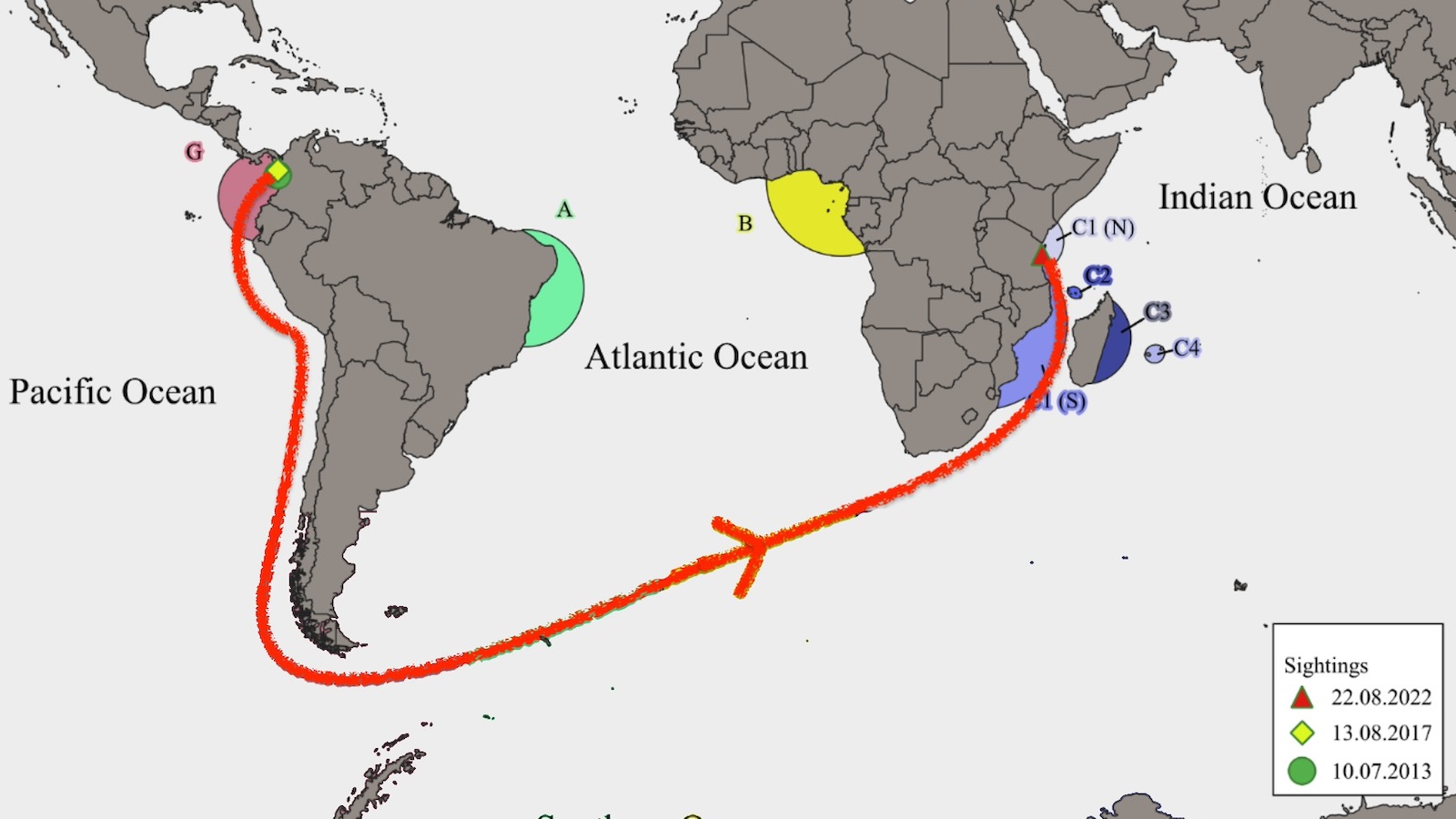Humpback whales are having a ‘baby boom’ in Antarctica
Once hunted to near-extinction, humpback whales living in southern oceans near Antarctica are making a comeback. But will it last?

A humpback whale (Megaptera novaeangliae) jumps out of the Pacific Ocean's waters in Los Cabos, Baja California Sur, Mexico on March 14, 2018.(Photo credit FERNANDO CASTILLO/AFP/Getty Images)
Sign up for Big Think on Substack
The most surprising and impactful new stories delivered to your inbox every week, for free.
Once hunted to near-extinction, humpback whales living in southern oceans near Antarctica are making a comeback.
Some quick facts about humpbacks:
- They live long lives, about the same as humans.
- Treaties were signed to protect them in 1959; otherwise, they probably wouldn’t be here anymore.
- Estimates are that, before the treaties were signed, whale populations were down to less than 10 percent of their pre-whaling levels.
- A new study found there were more pregnant females in a group of humpback whales on the Western Antarctic Peninsula than had previously been noted. In addition, the number of pregnant females has been trending upward for several years.
- Humpback whales are actually benefiting from global warming; there are now 80 more ice-free days per year, which allows them to feed on krill in the open water
However, that last fact is not likely to last; krill stock is being fished by some countries, and reduced sea ice actually endangers the crustaceans.
Some other species rebounding, though not as quickly as the humpback, are fin whales, blue whales, and the southern right whale.

Graph: Inter-annual variation in the proportion of assigned pregnant and not pregnant (pregnancy rate) female humpback whales sampled along the Western Antarctic Peninsula based on progesterone concentrations. The overall mean pregnancy rate across all years was 63.5%.
From the published study:
“Our research demonstrates that this feeding aggregation of humpbacks exhibits high pregnancy rates and a high proportion of females that are simultaneously pregnant and lactating. Both of these findings are consistent with a rapidly growing population.”
Sign up for Big Think on Substack
The most surprising and impactful new stories delivered to your inbox every week, for free.




